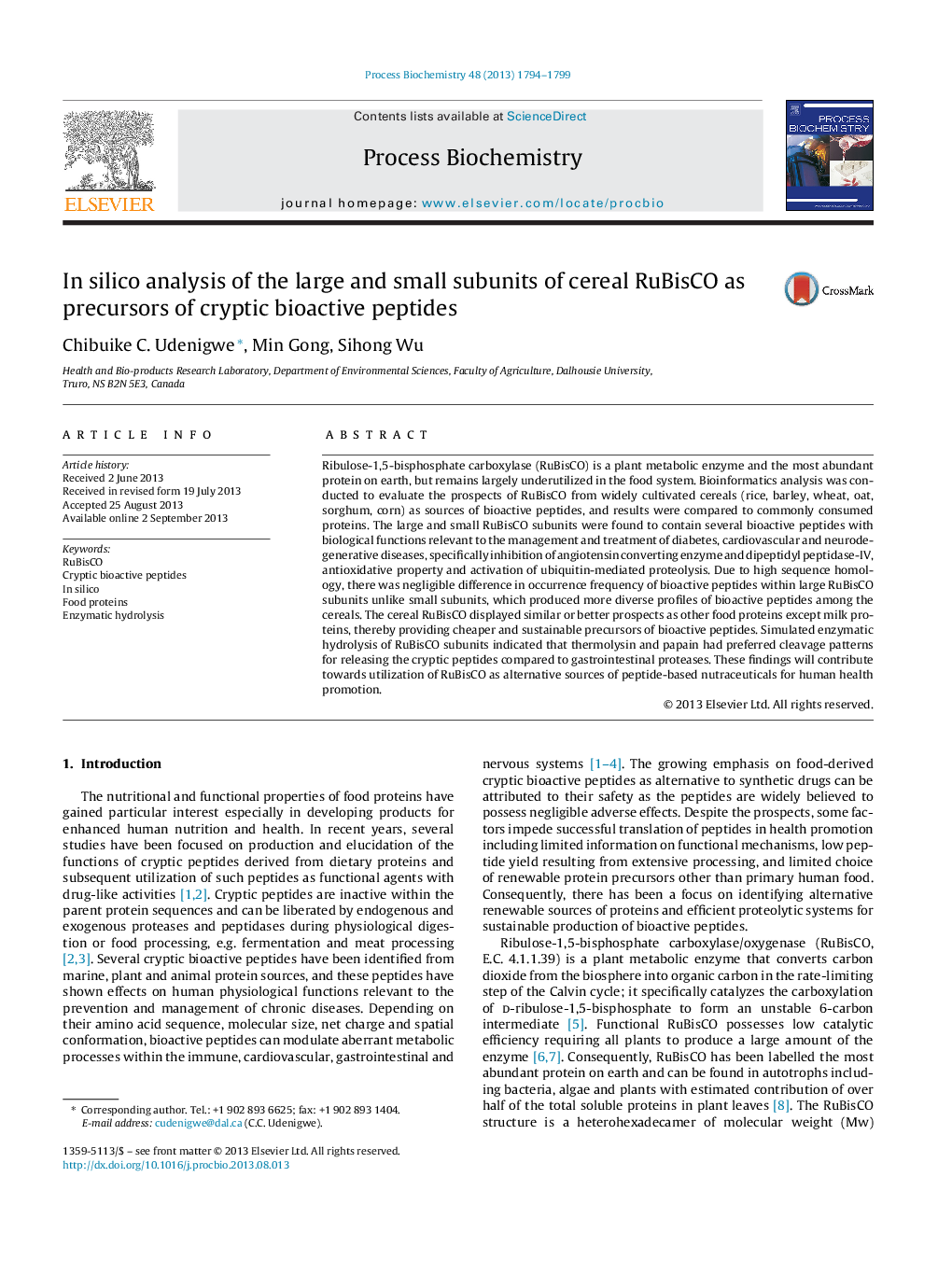| Article ID | Journal | Published Year | Pages | File Type |
|---|---|---|---|---|
| 34614 | Process Biochemistry | 2013 | 6 Pages |
•Cereal RuBisCO subunits contain bioactive peptides within their primary structures.•Occurrence frequency of the peptides competes favourably with other food proteins.•Higher sequence dissimilarity in small subunits led to diverse active peptide profiles.•Thermolysin and papain can release the active peptides better than gastric proteases.•RuBisCO is abundant and can be used as sustainable source of bioactive peptides.
Ribulose-1,5-bisphosphate carboxylase (RuBisCO) is a plant metabolic enzyme and the most abundant protein on earth, but remains largely underutilized in the food system. Bioinformatics analysis was conducted to evaluate the prospects of RuBisCO from widely cultivated cereals (rice, barley, wheat, oat, sorghum, corn) as sources of bioactive peptides, and results were compared to commonly consumed proteins. The large and small RuBisCO subunits were found to contain several bioactive peptides with biological functions relevant to the management and treatment of diabetes, cardiovascular and neurodegenerative diseases, specifically inhibition of angiotensin converting enzyme and dipeptidyl peptidase-IV, antioxidative property and activation of ubiquitin-mediated proteolysis. Due to high sequence homology, there was negligible difference in occurrence frequency of bioactive peptides within large RuBisCO subunits unlike small subunits, which produced more diverse profiles of bioactive peptides among the cereals. The cereal RuBisCO displayed similar or better prospects as other food proteins except milk proteins, thereby providing cheaper and sustainable precursors of bioactive peptides. Simulated enzymatic hydrolysis of RuBisCO subunits indicated that thermolysin and papain had preferred cleavage patterns for releasing the cryptic peptides compared to gastrointestinal proteases. These findings will contribute towards utilization of RuBisCO as alternative sources of peptide-based nutraceuticals for human health promotion.
